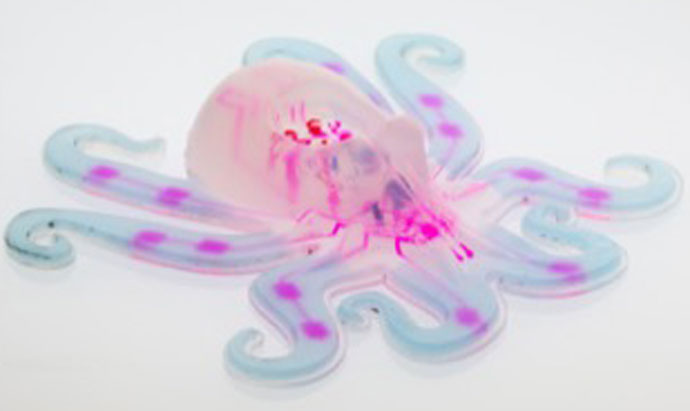Soft robots possess many attributes that are difficult, if not impossible, to achieve with conventional robots composed of rigid materials. Yet, despite recent advances, soft robots must still be tethered to hard robotic control systems and power sources. Lewis, Whitesides, and Wood reported in Nature the integrated design and fabrication of a fully soft, autonomous robot. The “octobot” is controlled through microfluidic logic that autonomously regulates fluid flow and, hence, catalytic decomposition of an on-board monopropellant fuel supply. The body and microfluidic logic of the robot are fabricated by molding and soft lithography, respectively, while the pneumatic actuator networks, on-board fuel reservoirs and catalytic reaction chambers needed for movement are patterned within the body via a multi-material, embedded 3D printing technique.
- M. Wehner, R. Truby, D. Fitzgerald, B. Mosadegh, G. Whitesides, J. Lewis & R. Wood, “An integrated design and fabrication strategy for entirely soft, autonomous robots,” Nature (2016) [DOI: 10.1038/nature 19100]

